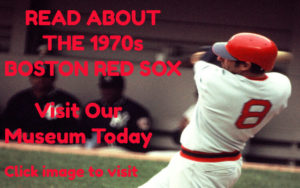The Seasonal Narrative Of The 1970 Boston Red Sox
The 1970 Boston Red Sox were a team with a new manager, in Eddie Kasko. But, for better and for worse, they were a team that produced the same results. For the third straight year, the Red Sox were a winning team that could score runs. They were also a team with pitching problems that ended up light-years behind the best in the AL East.
Carl Yastrzemski turned 30 and moved from left field to first base, but it didn’t slow down his bat. Yaz ripped 40 home runs for the second straight year, and cleared the century mark in both RBI and runs scored. Rico Petrocelli didn’t hit forty home runs as he had in ’69, but the 27-year-old shortstop still hit 29 home runs and finished with 103 RBI.
Reggie Smith was only 25 years old, but the centerfielder was already established as one of the game’s bright young stars. The 1970 season furthered that, as Smith finished with an on-base percentage of .361 and a slugging percentage of .497. George Scott had a breakout year at third base, finishing with numbers of .355/.467, while second baseman Mike Andrews continued to be a solid sparkplug, with a .344 OBP.
One year earlier, Tony Conigliaro had inspired everyone with his comeback from a terrible beaning in August of 1967. In 1970, “Tony C” took it to the next level and had a big year–his 116 RBI were second in the American League and he hit 36 home runs.
And the outfield was a family affair for the Red Sox–while Tony played right, his 22-year-old brother Billy was in left and posted a .339 OBP/.462 slugging.
It added up to an offense that finished second in the American League in runs scored. The problem was that the pitching ranked eighth of what was then a twelve-team league in ERA.
No major part of the staff finished with an ERA under 3.00. Ray Culp came the closest, at 3.04 in over 250 innings pitched, as he won 17 games. Sonny Siebert clocked in at 3.44 in 222 innings of work. Gary Peters took his turn reliably, logging over 220 innings, but ended up at 4.06. Mike Nagy, a 22-year-old arm that had shown promise in 1969 in limited work, ended up at 4.48 in his twenty starts.
Jim Lonborg continued to struggle with both health and effectiveness, as he had ever since his skiing accident on Christmas Eve of 1967. The ace of the ’67 pennant winning staff, Lonborg only went to the post four times in 1970. And the only reliever with any consistency at all was Sparky Lyle, who saved 20 games, but even here the ERA was pretty high at 3.88.
The Red Sox struggled in the early going, the lowlight being a 2-7 road trip at Milwaukee, Oakland and the California Angels, with the A’s being the only good team in that group. Then, with a record of 16-19, the Sox lost three of four to the front-running Baltimore Orioles. Boston reached Memorial Day with a record 17-22 and were 10 1/2 back of the Orioles very quickly.
Just after the holiday weekend, before May was out, the Sox turned it around with a 7-1 stretch at Fenway Park. It got them to .500, though they didn’t clear the mark for good until July when a six-game win home win streak over losing teams in the Cleveland Indians and Washington Senators pushed them into winning territory. By the All-Star break, the Red Sox were 44-41, and hanging around in the AL East race, within nine games of the Orioles.
Ultimately though, the Red Sox couldn’t beat the AL East front-runner head-to-head. They lost 13 of 18 games against the Orioles, and by Labor Day, Boston was in a 17 1/2 game hole with a record of 71-67. The flip side was that at least they could handle Cleveland and Washington, going 12-6 against both teams. The Red Sox closed the year by winning 10 of 12 games, most against the Indians and Senators and finished with a mark of 87-75, good for third place in the AL East.


